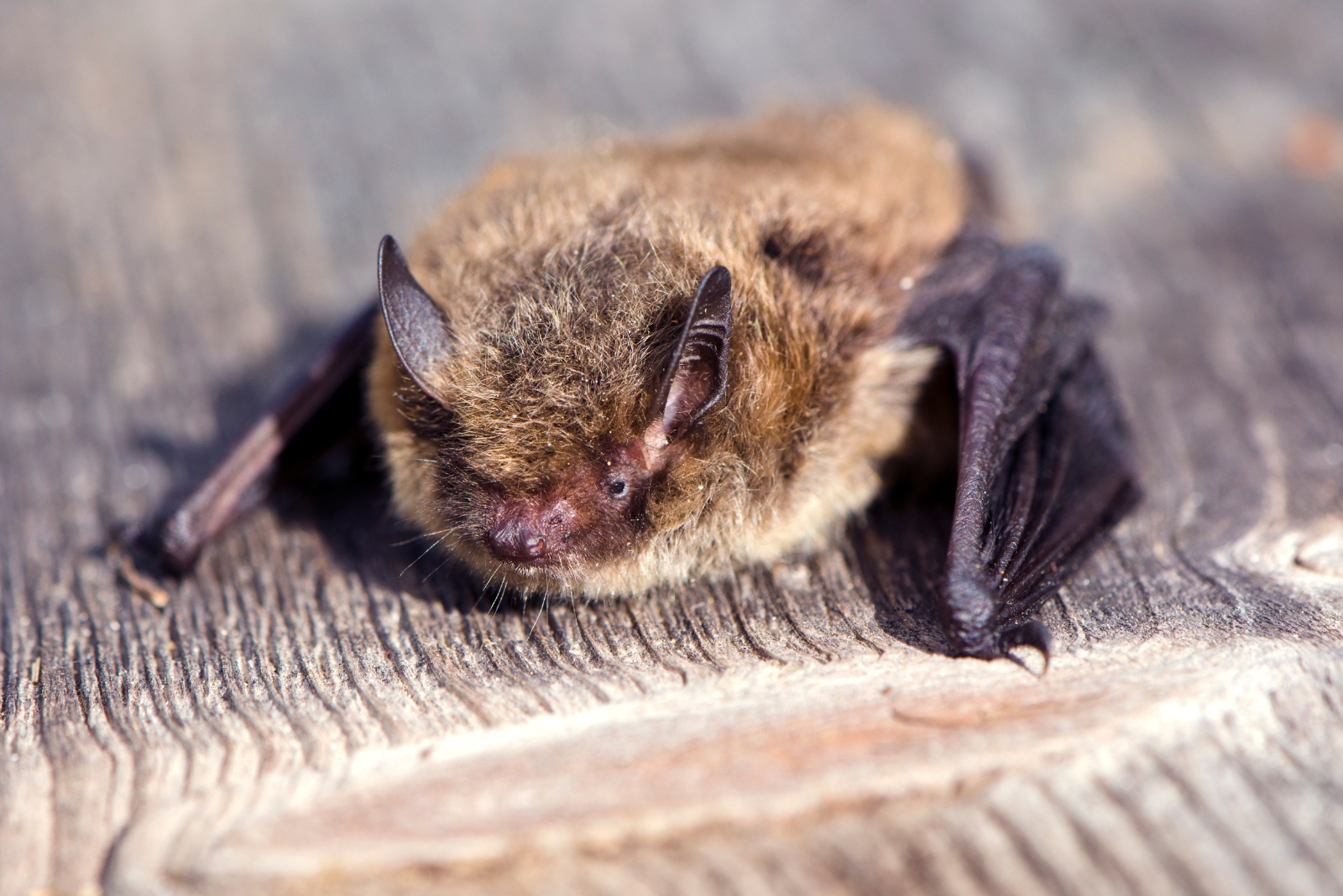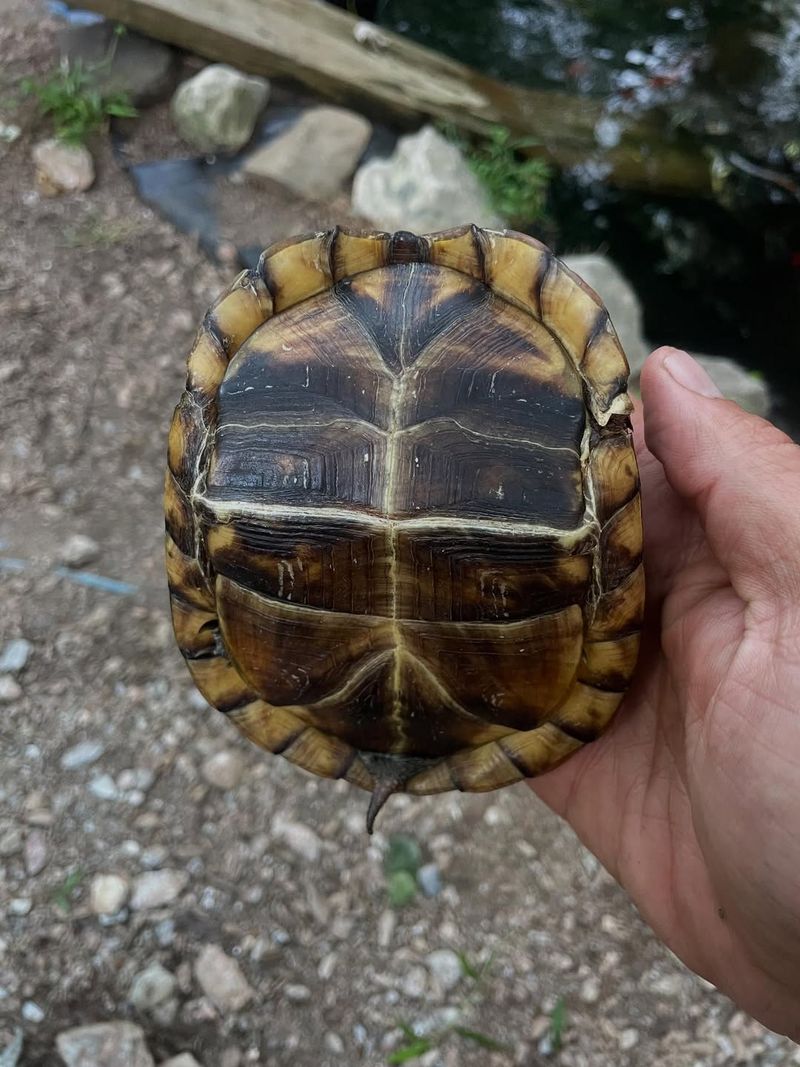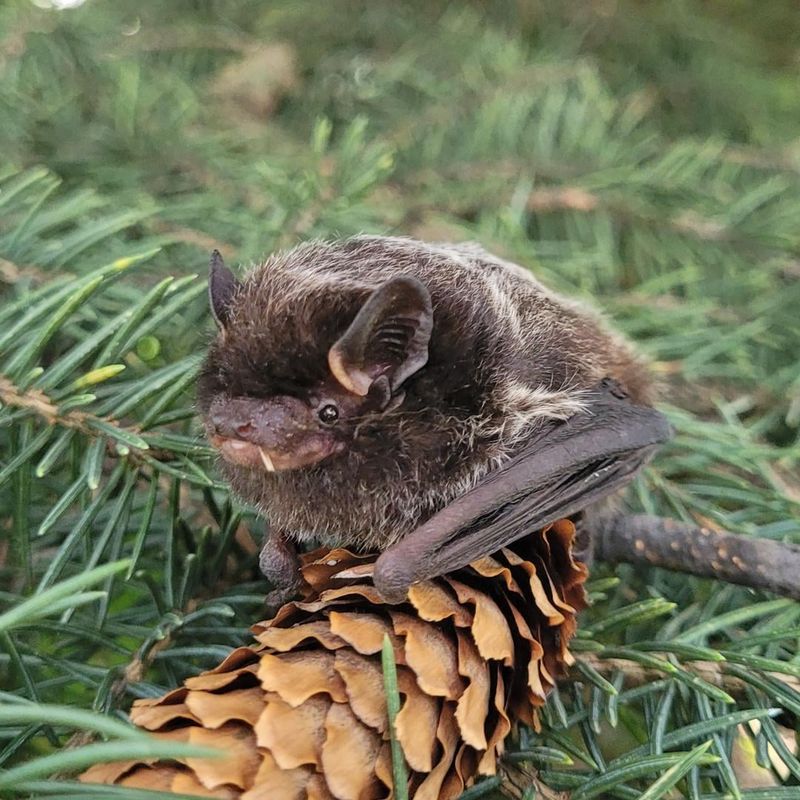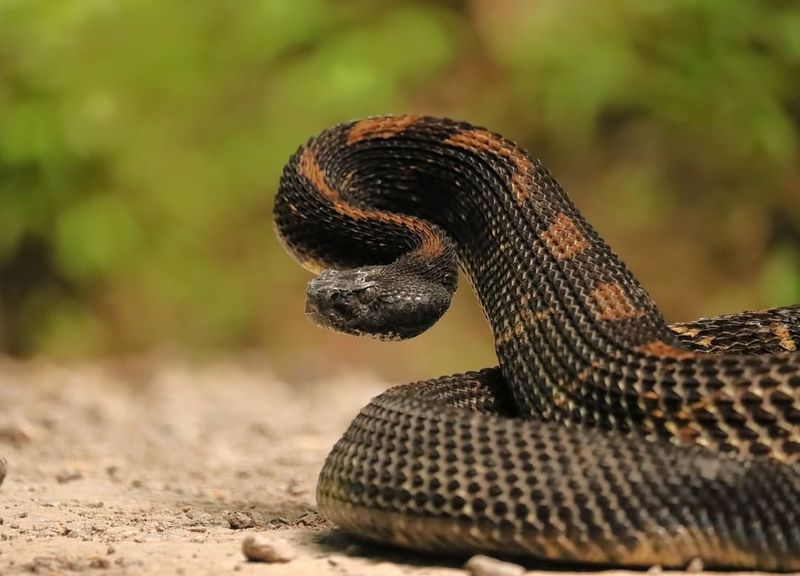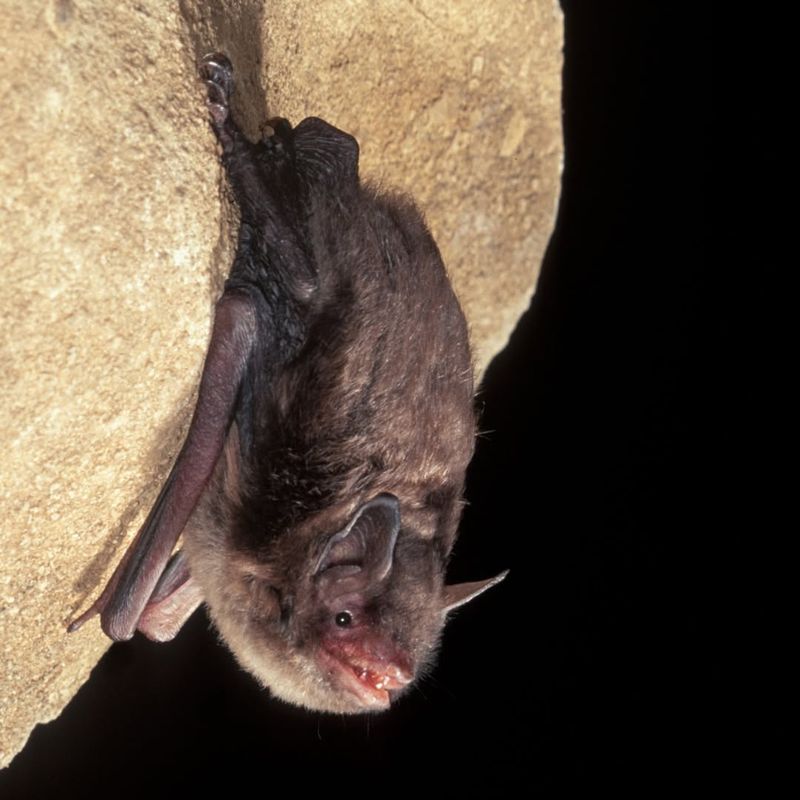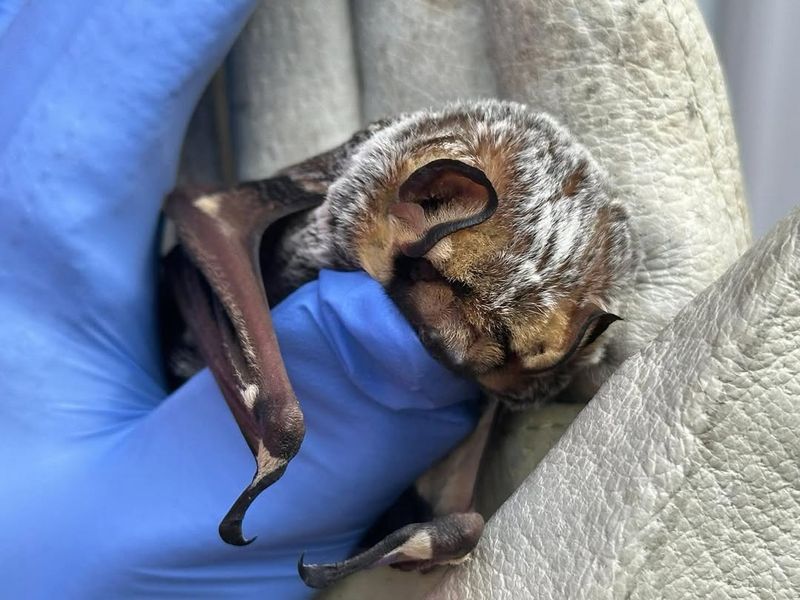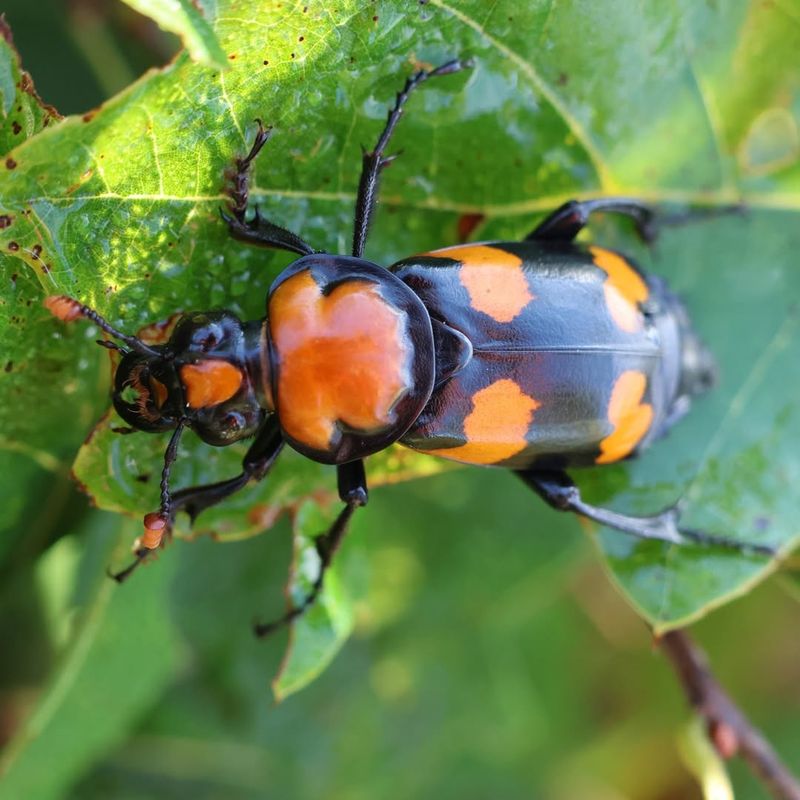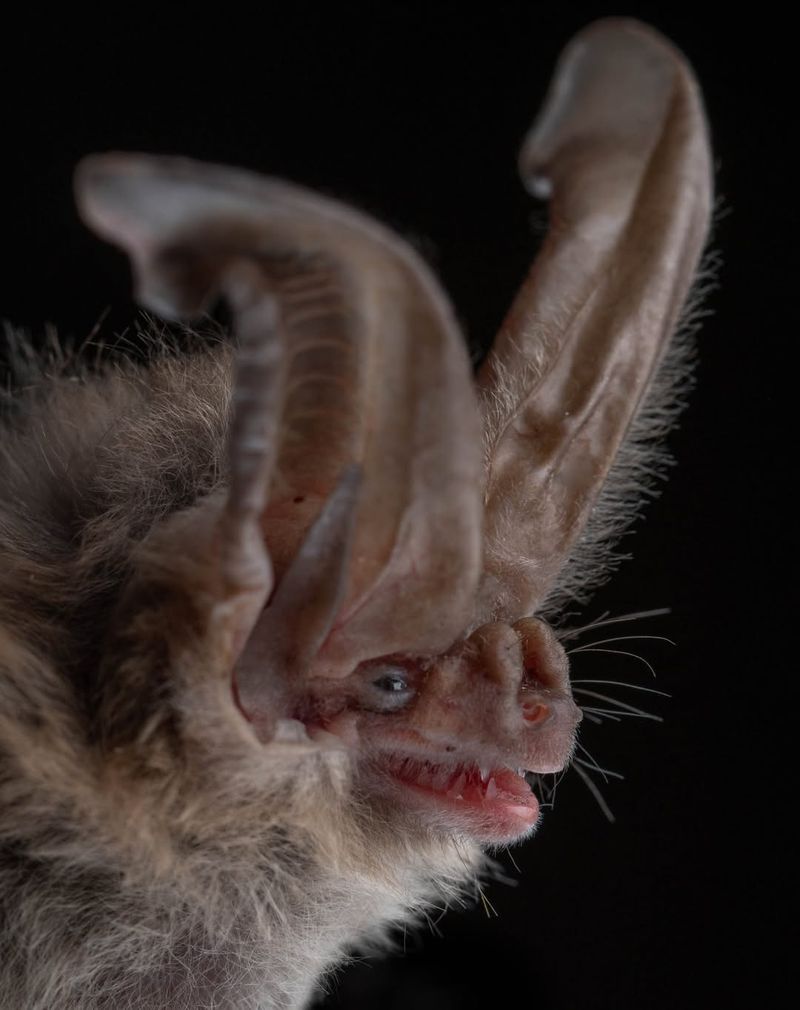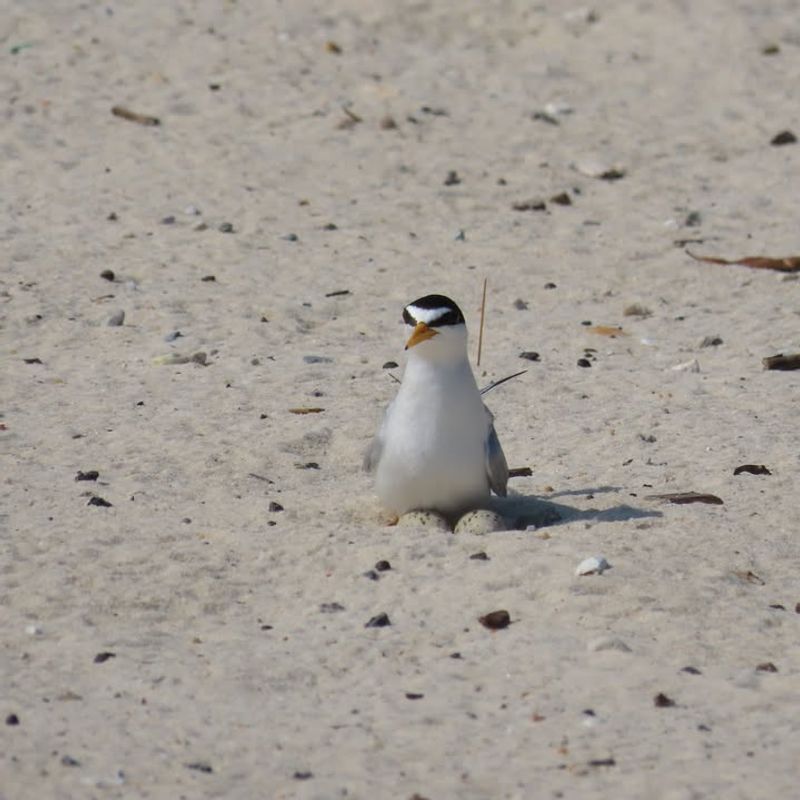Arkansas has some unexpected houseguests you’re simply not allowed to touch, even if they show up in the most inconvenient spots. I remember being shocked the first time I learned one of them was living right under my porch.
These protected critters have some serious rules surrounding them. Let’s run through why they’re off-limits and what that means for anyone who crosses paths with them.
1. Eastern Box Turtle
Found wandering through Arkansas gardens, box turtles carry special legal protection under state wildlife regulations. Their slow movements and colorful shells make them easy to spot, but touching or relocating them breaks the law.
Arkansas residents must leave these reptiles alone, even if they appear in flower beds or vegetable patches. Box turtles control insect populations naturally and play vital roles in seed dispersal across the Natural State.
Penalties for removing them include hefty fines and possible criminal charges depending on circumstances.
2. Little Brown Bat
Colonies of these tiny mammals often take up residence in Arkansas attics during warmer months. While their presence might seem alarming, federal and state laws strictly prohibit harming or evicting them without wildlife expert assistance.
Little brown bats consume thousands of mosquitoes nightly, providing natural pest control for Arkansas homeowners. Their populations have declined dramatically due to disease, earning them protected status throughout the state.
Contact licensed wildlife rehabilitators for safe, legal removal options if bats become problematic.
3. Timber Rattlesnake
Despite their intimidating reputation, timber rattlesnakes receive full protection under Arkansas wildlife statutes. Finding one near your home can be scary, but killing or capturing it violates state regulations.
Arkansas Game and Fish Commission considers these snakes essential for controlling rodent populations in rural and suburban areas. They typically avoid human contact and will retreat if given space and opportunity to escape safely.
Professional wildlife handlers can relocate problematic snakes legally, keeping both humans and reptiles safe from harm.
4. Indiana Bat
Critically endangered and federally protected, Indiana bats occasionally roost in Arkansas structures during migration or hibernation periods. Their tiny size makes them hard to distinguish from other bat species without expert identification.
Arkansas property owners cannot disturb these bats or their roosting sites under any circumstances without special permits. Violations carry substantial federal penalties including fines exceeding ten thousand dollars per incident.
Conservation efforts throughout Arkansas focus on protecting remaining populations from further decline and habitat loss.
5. Alligator Snapping Turtle
Arkansas waterways host these prehistoric-looking reptiles, which can live over a century in the wild. Their massive size and powerful jaws make them impressive, but state law completely prohibits capturing or harming them.
Alligator snapping turtles maintain healthy aquatic ecosystems throughout Arkansas by cleaning up dead fish and controlling certain prey populations. Development and historical overharvesting reduced their numbers, prompting strict legal protections.
Observing them from a safe distance remains legal, but any physical interaction with these ancient creatures breaks Arkansas wildlife regulations.
6. Red-Cockaded Woodpecker
Spotting this rare woodpecker in Arkansas pine forests represents a special conservation success story. Federal endangered species protections make it illegal to disturb their nests or habitat, even on private property.
Arkansas landowners with red-cockaded woodpecker populations must work with wildlife officials before conducting any tree removal or land clearing activities. These birds require old-growth pine trees for nesting, making habitat preservation crucial for survival.
Cooperation between Arkansas residents and conservation groups helps maintain small but stable populations throughout suitable forest areas.
7. Gray Bat
Cave systems throughout Arkansas provide critical habitat for endangered gray bats, which gather in massive colonies during breeding season. Disturbing caves or structures where they roost violates both state and federal protection laws.
Arkansas homeowners occasionally find gray bats in buildings near waterways, but removal requires specialized permits and professional expertise. Their diet consists entirely of aquatic insects, making them valuable for controlling pest populations near lakes and rivers.
Conservation success in Arkansas depends on protecting known roosting sites from human disturbance and vandalism.
8. American Burying Beetle
Once common across Arkansas, this federally endangered insect now survives in limited areas with strict legal protections. Their role in decomposing small animal carcasses makes them nature’s cleanup crew.
Arkansas development projects must survey for burying beetles before breaking ground, as their presence can require special conservation measures. These insects feature striking orange markings on glossy black bodies, making identification relatively straightforward for trained observers.
Habitat loss throughout Arkansas continues threatening their recovery, making every remaining population crucial for species survival and ecosystem health.
9. Bald Eagle
America’s national symbol nests along Arkansas rivers and lakes, enjoying full federal protection under multiple wildlife laws. Even approaching nests too closely can result in legal consequences for well-meaning observers.
Arkansas has seen bald eagle populations recover dramatically over recent decades thanks to strict protections and conservation efforts. Property owners with nesting eagles must maintain buffer zones and avoid disturbing trees during breeding season from fall through early summer.
Witnessing these magnificent birds hunt fish in Arkansas waters offers unforgettable experiences without requiring close contact.
10. Ozark Big-Eared Bat
Living exclusively in Arkansas and Oklahoma cave systems, these bats earned their name from oversized ears that aid echolocation. Federal endangered species status makes any disturbance to their habitat a serious criminal offense.
Arkansas caves hosting Ozark big-eared bats often receive special management protections, including seasonal closures and restricted access for recreational cavers. Their extreme sensitivity to disturbance means even brief human presence can cause colony abandonment.
Conservation groups throughout Arkansas work tirelessly protecting known roosting caves from vandalism and inappropriate human activity.
11. Interior Least Tern
Nesting on Arkansas river sandbars during summer months, these tiny seabirds receive federal endangered species protections. Their ground nests remain vulnerable to flooding and human disturbance along major waterways.
Arkansas boaters and anglers must avoid sandbar areas marked for tern nesting from late spring through summer breeding season. These energetic birds dive for small fish, filling important ecological roles in river systems throughout the state.
Cooperation from Arkansas outdoor enthusiasts helps ensure successful breeding seasons and gradual population recovery for this charismatic species.

